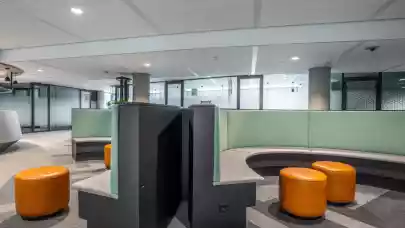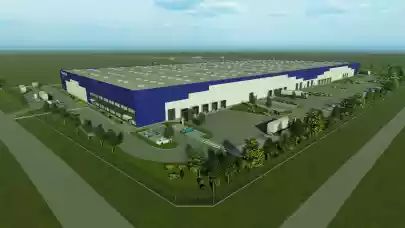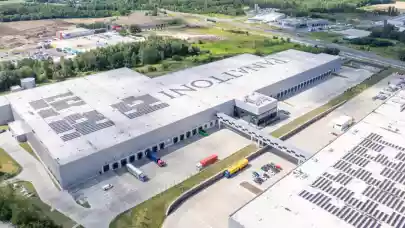
What will offices look like once the pandemic is over? Five quarters of a health crisis later and there is still no clear answer for Warsaw’s office market. Prudent decision-making and waiting to see what happens as observed for the last few quarters on the one hand, with evident landlord flexibility, great expectations as to the vaccination rate in the capital, unfreezing of decision-making processes regarding office leases and the decidedly growing need and desire to return to office working on the other hand. Analysts at BNP Paribas Real Estate discuss the key trends prevailing on the capital’s office market to summarize the second quarter of the year.
"The figures for the last quarter do not really reflect the complexity of the situation in which the entire office sector has found itself. Certainly, the crisis brought on by the COVID-19 pandemic has actually accelerated certain processes that sooner or later would have had an impact on the direction in which the office sector is going. The difficulty lies in the fact that it is now that we need smart and bold ideas for offices that have to be not only greener and more sustainable, but also healthier, safer, and better thought-out to allow for new working models and styles. We are nearing the end of the era of single-use offices located in single-use zones, and the pandemic showed us where to look for stimuli to create projects and places that are better for employees, thrive on diversity and shape the environment they are set in, while at the same time enabling organizations to meet their business goals", says Małgorzata Fibakiewicz, Head of Business Intelligence Hub, BNP Paribas Real Estate
It follows from the report drawn up by BNP Paribas Real Estate that the total volume of transactions recorded in Q2 of this year is more than one quarter lower than the result achieved in the corresponding period last year when leases for 194 000 sqm of modern office space were signed. The shortness of breath troubling the capital’s office market is best seen when we set this year’s second quarter against the same period in the pre-pandemic 2019 with its volume of lease transactions exceeding the current figure by more than 45%.
Authors of the report stress that with a 48% share held in gross demand, lease renegotiations and renewals accounted for a significant part of all the transactions concluded. A lease of this type—for more than 20,000 sqm— was signed by a confidential client for space in the Senator building, which was the largest transaction concluded in Q2. Jansen Cilag also made the decision to extend its stay in its current office in Wiśniowy Business Park where it leases 7,500 sqm.
The unusually high volume of lease renewals and the essentially lower demand for new office space translated in Q2 into lower absorption and rising average vacancy rate, which once again saw a quarter-on-quarter increase up to more than 12.4% from the 11.4% recorded in Q1. A positive prognosis based on the observations made in the first half of the year comes in the shape of increased tenant activity, resumed leasing processes and the return to negotiating tables. As the process of lease finalization usually takes a dozen or so months, this is how long we will have to wait and see what happens in consequence of this increased activity. Although, on the other hand, there is certainly room for quicker lease conclusion processes—lasting only few months—arising from the need to make a prompt decision following a suspension thereof.
"I believe that the worst is now behind us. We can see that the leasing market looks slightly different in the shadow of the pandemic, with aspects such as office space subleases—previously never broached during negotiations—now brought to the parties’ attention. Some of the processes initiated this year are unquestionably conducted under time pressure, with some being commenced well in advance of the expiry of the current lease term. Q2 brought with it a significantly greater number of lease processes to the market, with more tenants viewing their preferred office space. Most importantly, we could see that many companies had already taken steps to analyse their internal needs and that they were looking at leasing new office space with the aim to make a strategic—and therefore long-term—decision with regard to their organisation', comments Mikołaj Laskowski, Head of Office Agency, BNP Paribas Real Estate
The gradual return to offices—where estimated average occupancy in Q2 stood at 30%—means that the pandemic has not permanently changed the prevailing working model into a remote one. However, the pace at which employees are returning to their office desks shows that quite a few organizations have still not decided on the ultimate model they intend to implement for their operations in the future and the role remote work is to play there. This, in turn, inhibits any decisions with regard to space fit-out and adapting workplaces to the new reality. The conservatism resulting from the concern about a fourth wave of the pandemic and the consequent postponement of decisions are the reasons why some tenants ask themselves whether they need new space at all, and—if so—how much of it.
Q2 saw Warsaw gain less than 60 000 sqm of modern office space, of which close to 56,500 sqm were delivered in a 45-storey office building at Rondo Daszyńskiego. So far, half of the space in Warsaw Unit has been leased, with the insurance company Warta being the main tenant. Analysts at BNP Paribas Real Estate point out that a mere 360,000 sqm of space are currently being developed across Warsaw’s construction sites, which—assuming steadily regenerating demand— could be a sign of a supply gap to appear in the not-so-distant future of 2023-2024.
Similarly as in the previous quarters, tenants continue to look for solutions that would generate guaranteed savings for them—preferably instantaneously—and provide them with greater flexibility. The pandemic—like any crisis before—resulted in subleases becoming a frequent occurrence on the Warsaw office market. Notably, they are concluded for both small units and extremely large spaces. In addition to flexibility in terms of the lease itself, subleasing gives tenants the opportunity to immediately move into ready-to-occupy space, thus enabling them to minimize their fit-out costs, which in the era of unpredictably increasing prices for materials and services is of importance from the point of view of a tenant’s wallet. Looking for additional options, businesses are now also considering serviced offices and coworking spaces, with an increasing volume of transactions of this type being observed quarter-on-quarter.



